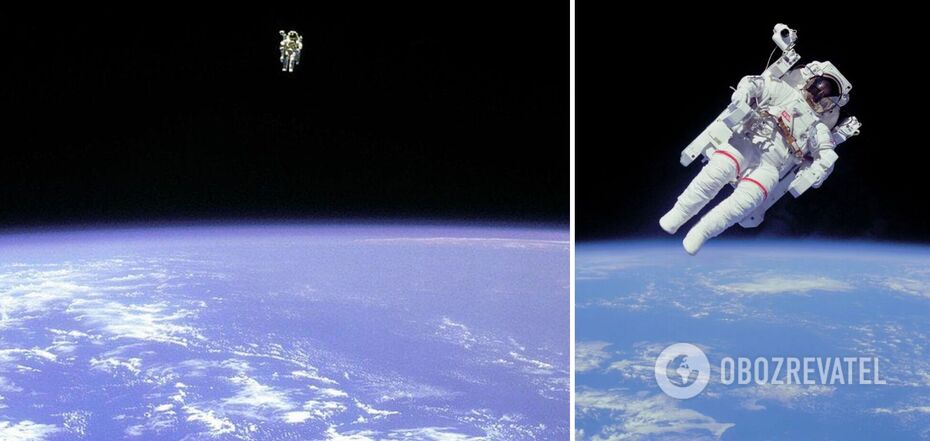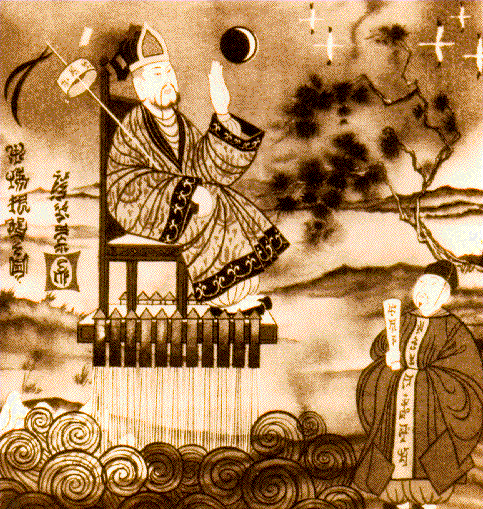Life
What the first spacewalk without a safety net looked like: a historical video
Since ancient times mankind has dreamed of space, contemplating the stars and distant planets. When the dream of unattainable space came true, every astronaut dreamed of accomplishing something there that others could not. Are there so many options? Yuri Gagarin was the first to go into space, Neil Armstrong set foot on the moon... but what else?
In 1984 NASA found the answer and for the first time in history they sent their astronaut on a free walk in space without any insurance. OBOZREVATEL tells the story of Bruce McCandless' brave act (read the news to the end to see the video).
McCandless, born June 8, 1937, was a military heir. His father was an admiral and his grandfather was a commander. But young Bruce was beckoned by the sky and the vastness of space.
"When I was growing up, we didn't have astronauts. But we had comic books - Flash Gordon, Buck Rogers, those kinds of people. When I told my parents I wanted to fly like Buck Rogers, they said, "Well, maybe a man will go into space someday, but definitely not until the year 2000. So why don't you come down to Earth and do something practical, like learn how to fly a battleship or something," McCandless recalled of his childhood during a 2015 speech.
So he came down to earth and went to study at the U.S. Naval Academy in Annapolis, Maryland, and at the age of 23 was already commissioned as a naval pilot. He went on to also be a fighter pilot and for a short time was a pilot instructor in the U.S. Navy.
He later earned a master's degree in electrical engineering from Stanford University (California) and, at age 50, another master's degree in business administration from the University of Houston.
His greatest fame, however, was at NASA, where he went as an astronaut candidate in 1966.
In 1971 he was a member of the Apollo 14 mission support crew, and two years later he was the backup pilot for Skylab 2.
McCandless was also one of the chief developers of the Manned Maneuvering Unit (MMU): a rocket backpack that the astronaut carried during space walks on the shuttle. It was this invention, in 1984, that inscribed his name in space history.
Before that, NASA developed other concepts of such modules, but all of them did not work properly: they were either too heavy or too hot.
One foot here, one foot there
In February 1984, McCandless made his first mission as a specialist on the STS-41-B mission aboard the shuttle Challenger. During that flight, he tested the MMU during a spacewalk and became the first person to fly into space without a safety tether that would connect to the spacecraft.
On February 7, 1984, during his spacewalk, McCandless flew nearly 100 meters away from the shuttle. When he contacted the Mission Control Center to report on the MMU, he joked, alluding to the moon landing, "it may have been a small step for Neil (Armstrong), but a hell of a leap for me."
He later admitted that he had thought the phrase through in advance because he was jokingly offended at Armstrong for not sharing his emotions about the moon landing with him, and also thought the joke would set the right mood for the exciting moment.
And there really was a lot to worry about, because the United States and the Soviet Union were in a so-called space race and it was unacceptable to make a mistake. Especially since the whole world was watching the flight.
"Immediately after my (flight) with MMU, I was surprised that the French called it a 'flying chair', referring to the first human experiment with a rocket engine, which I was told was conducted by a Chinese emperor in the early first millennium AD," the astronaut later said, referring to the legend of the Chinese scientist Wang Hu, who lived in the 15th and 16th centuries.
According to the legend, Wang Hu wanted to make a flight to the moon. For this he took a large wicker chair, to which attached 47 large rockets. When the scientist's assistants simultaneously set all the rockets on fire and fled, there was a terrible rumble followed by huge clouds of smoke. When the smoke cleared, Wang Hu's assistants saw that both the chair and the scientist had disappeared.
Fortunately for McCandless, he lived in the twentieth century, which was much more advanced, so his flight was not accompanied by clouds of smoke or rumbling. Nevertheless, his act was very brave.
The space flight was photographed by another member of the mission, astronaut Robert Gibson, who took a picture of McCandless against the Earth. The spectacular photo became one of the symbols of NASA's space program.
"I actually lowered the sun visor for no particular reason other than to keep the sun out of my eyes, so it could have been anybody. And I think that's part of the attraction. I think it's fair to say that I was amazed at the number of different people who came up to me and said, "Hey, I have your picture hanging in my bedroom." It really became iconic for the space program, and in a way, it seems to represent the embodiment of humanity's desire to be free of gravity and to be able to fly in space," McCandless told National Geographic.
Speaking about the emotions of that flight, the astronaut confessed that the most ... froze during his mission, because the spacesuits were designed so that the astronauts were not hot during hard physical work, and the MMU was controlled by the movement of the fingers, so the body did not produce excessive heat. Nevertheless, McCandless admits it was fun.
"Yeah, it was fun. But I'll tell you, I thought there would be unearthly silence, and I was wrong. I had a radio connection and I had three different people talking to me... It wasn't quiet and peaceful at all," he recounted.
In addition to the space walk, that mission put two communications satellites into orbit and successfully returned to Earth on Feb. 11, 1984.
Six years later, McCandless was again part of a space mission launched on the space shuttle Discovery. At that time the Hubble telescope, whose images would later be admired by all mankind, was launched into space.
After NASA, McCandless worked for the Martin Marietta Corporation and was a senior scientist at Lockheed Martin Space Systems.
He passed away at the age of 80 on December 21, 2017.
Previously OBOZREVATEL also told about how sex in space can be and what changes should prepare mankind.
































